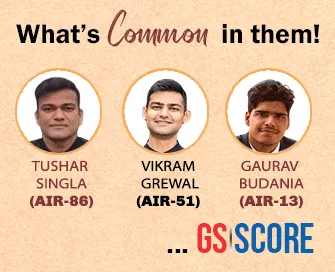

6th May 2025 (14 Topics)
Context
Under India's Insolvency and Bankruptcy Code (IBC), when a company cannot repay its debts, a structured process called the Corporate Insolvency Resolution Process (CIRP) allows for either its revival through a resolution plan or liquidation. The recent Supreme Court judgment cancelling JSW Steel’s resolution plan for Bhushan Power & Steel Ltd (BPSL) has brought attention to serious procedural lapses and legal violations in high-value insolvency cases.
What is IBC?
- The Insolvency and Bankruptcy Code (IBC), 2016 is a legal framework to resolve financial stress in companies.
- It aims for time-bound resolution of bad loans through either:
- A resolution plan (reviving the company), or
- Liquidation (selling assets to repay creditors).
- Key Steps in Insolvency Resolution:
- Initiation: A creditor or the company itself applies for insolvency at the NCLT.
- CIRP (Corporate Insolvency Resolution Process) begins. An RP (Resolution Professional) is appointed.
- CoC (Committee of Creditors) evaluates and votes on resolution plans.
- If approved, the plan is sent to NCLT for final approval.
- If no plan is approved within the timeline, liquidation follows.
What Did the Supreme Court Say?
The Supreme Court rejected JSW Steel’s plan and ordered liquidation of BPSL for several serious reasons:
- Missed Legal Timelines: Under IBC, the resolution process must be completed within 270 days (can be extended to 330 days in special cases). JSW’s plan was approved by the CoC in Oct 2018, but submitted to NCLT only in Feb 2019. The court found no valid reason for this delay, making the entire process time-barred.
- Violation of Section 29A of IBC: Section 29A disqualifies defaulting promoters or those “acting in concert” with them from submitting resolution plans. The court found the RP failed to check JSW’s eligibility under this rule. It raised questions about connected entities or promoters, possibly being ineligible.
- Unfair Treatment of Operational Creditors: Section 30(2) of IBC requires fair and equitable treatment of all creditors. Operational creditors (suppliers, vendors) argued that their dues were not fairly addressed. The court agreed, noting a lack of transparency and diligence.
- Failure to Address Avoidance Transactions: RPs are supposed to check for fraudulent or undervalued transactions by the former management (called avoidance transactions). The RP did not take proper action, weakening the credibility of the entire process.
- Delayed Implementation by JSW Steel: After NCLT cleared the plan in 2019, JSW Steel delayed payments to creditors for over 2 years, until 2021–22. The court said this delay may have helped JSW gain from rising steel prices, raising concerns of commercial opportunism.
Why is this a big deal?
This ruling could change how insolvency resolutions work in India, especially for large deals:
- It shows courts will strictly enforce timelines, not tolerate delays.
- Resolution professionals (RPs) must now act more diligently — in checking eligibility, treating creditors fairly, and pursuing frauds.
- It puts commercial wisdom of creditors under scrutiny when due process is not followed.
- Raises concerns for investors and bidders about the finality and enforceability of approved resolution plans.
Wider Implications
- For the IBC Ecosystem: This judgment reasserts IBC’s core principles — speed, transparency, and fairness. But it may also make large investors more cautious, as even approved plans can be reversed.
- For Operational Creditors: A rare case where operational creditors won — often they are left behind in the resolution process. It could lead to stronger enforcement of their rights going forward.
- For Promoters and RPs: RPs can no longer be passive facilitators — they must now show rigorous compliance. Promoters or their allies can’t find backdoor entries into the resolution process.
Fact Box:About Non-Performing Assets (NPAs)
About National Company Law Tribunal (NCLT)
|
PYQ:Q: Consider the following statements: (2018) Non-performing assets (NPAs) decline in value when-
Which of the above statements are correct?
Solution: (c) |
More Articles

